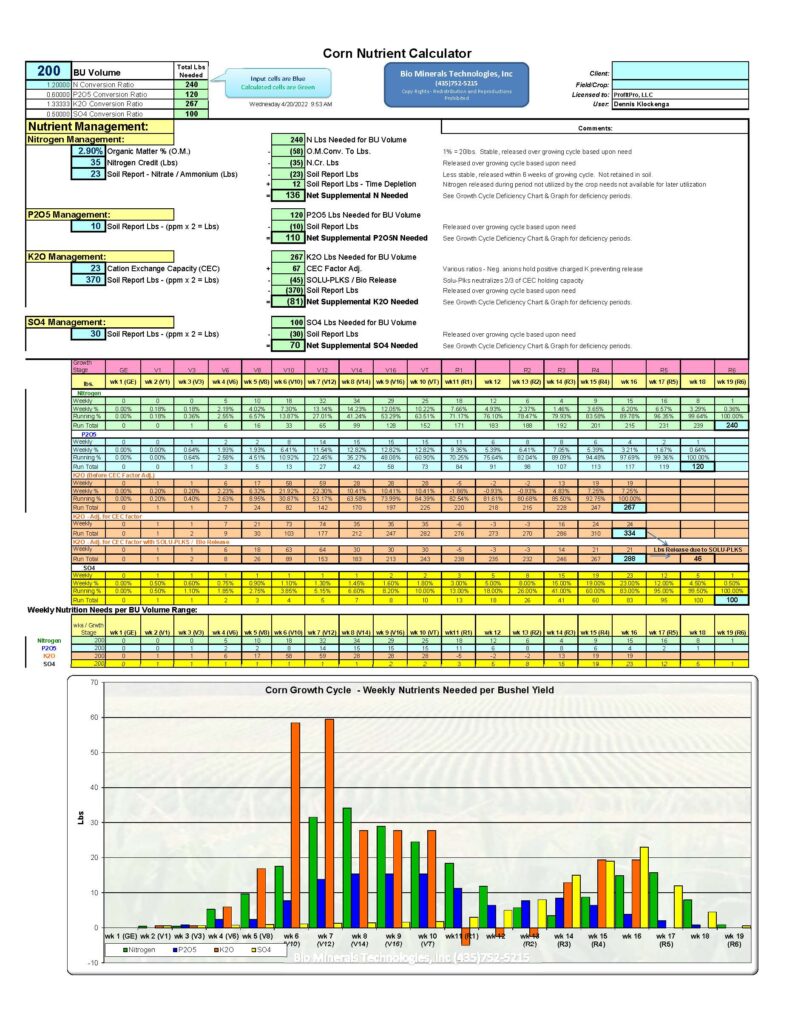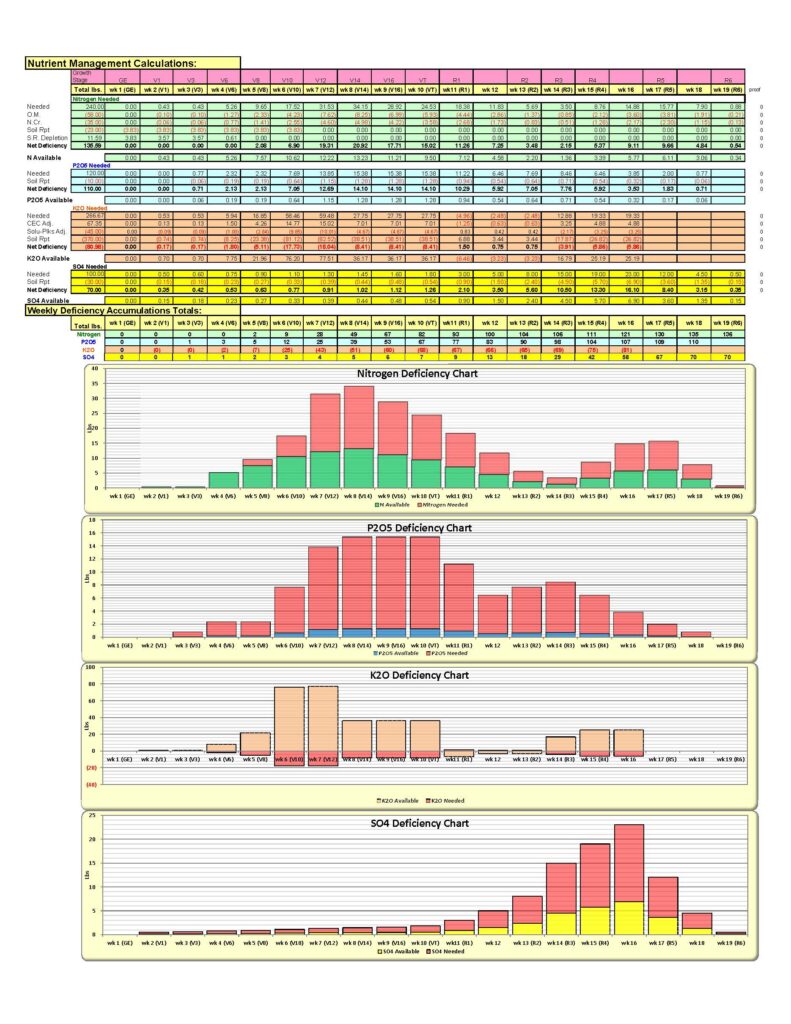
Think like a Corn Plant
Want Higher Yields? Think Like a Corn Plant
You’ve heard of the golden rule (do unto others as you’d have done to you). Then there’s a platinum rule (do unto others as they’d want done unto them), and it’s one of the keys to boosting your corn’s yield potential.
“We call this ‘thinking like a corn plant,’” said Dr. Jim Ladlie, founder and owner of ProfitProAG. “While it’s tempting to think you’re in control in production agriculture, I encourage you to take a more sustainable approach, understand more about plant and soil biology, and stay seven to 10 days ahead of your crop’s needs.”
If you understand how corn plants grow and what they need for growth, you can do a better job of providing resources within your control to keep your crop productive. Here are five ways to make that happen:
1. Reduce tillage as much as possible. What’s the limiting nutrient in crop production? It’s carbon, which comprises 45% of the plant and provides the energy that powers plant growth and development, Ladlie said. “It all goes back to the soil,” he added. Healthy soils (the ones filled with beneficial microbes and earthworms) are rich in bio-active carbon, which is essential to plant health, growth and development. The beneficial microbes in a healthy soil produce enzymes that make nutrients readily available for plant uptake. “The microbes feed the plants, and the plants feed the microbes,” Ladlie said. Too much tillage, however, disrupts the environment where so many beneficial microbes reside. “Try to reduce tillage as much as possible if you want to create healthier soils that nurture the microbes that help grow healthier, more resilient crops,” Ladlie said. “This can also help you reduce the need for insecticides, fungicides and other pesticides.” Besides, tilling soils is expensive when you consider equipment, labor and fuel cost.
2. Feed the plant when it’s hungry. It’s common sense, but a corn plant has different nutrient needs at various stages of its life. While young plants don’t need a lot of nitrogen (N), for example, that changes dramatically by the time the crop reaches the V8 to V10 stage. “Also, corn can go from V7 to V8 in 3 days, if conditions are right,” said Dennis Klockenga, a crops specialist with ProfitProAG. “That’s why you don’t want to put all your N on in the spring or the fall.” Not sure how much N your soil can hold at one time? Look at your CEC number from your soil test. The soil cation exchange capacity (CEC) is directly related to your soil’s composition (including sand, silt, clay and organic matter), and it influences how much N your soil can hold. When you multiply your soil’s CEC number by 10, that’s the amount of N your soil can hold at one time, Klockenga said.
3. Focus on foliar feeding. Feeding your crop at key times throughout its growing cycle helps keep plants healthy through the end of the growing season. That’s where foliar feeding comes in, especially at V5 and V6, when ear girth is determined. It’s also useful around V8 to V10, when the plant determines the length of the corn ears.
Also, did you know 50% of corn’s test weight is accumulated in the last 30 days before harvest? That’s why it’s important for corn plants to stay green as long as possible. “When plants die prematurely, it means they ran out of energy,” Ladlie said. “If a plant dies in early September, you’re likely leaving 25 to 30 bushels per acre on the table. If you multiply that times $6 a bushel, that’s $180 or more per acre that you’re leaving on the table.”
4. Don’t skip the sulfur. While sulfur is a vital nutrient for photosynthesis, it’s sometimes in short supply in fields today. Signs of a sulfur-deficient crop include light-colored leaves, especially on young corn leaves, Klockenga said. Options for adding sulfur, as needed, include pre-plant or at-plant with ammonium sulfate (the dry form of sulfur). Sulfur in the form of ammonium thiosulfate (ATS) can also be blended with 28% or 32% UAN. Elemental sulfur can also be used and is best applied in the fall.
5. Measure Brix. What if there were a “vitality score” that could help you assess your crop’s health during the growing season? There is, when you measure Brix levels, which reflect the quality of your crop, from nutrient density to flavor. Brix levels are measured on a scale from 0 (poorest) to 32 (best). Your goal is to produce crops with a Brix measurement of 12 or higher. “Anything below 8 is not worthy of reproducing or eating,” Ladlie said. “In fact, it’s nature’s garbage. Unfortunately, many of the crops we test, including corn, soybeans and forage, have Brix levels of 4 to 6.” It’s easy to measure Brix levels right in the field with a simple, affordable tool called a refractometer (which you can get online). While a refractometer looks like a small flashlight, it’s a precision instrument that allows you to quickly measure the percentage of dissolved sugars in plant sap, Ladlie said. These sugar levels are correlated with the plant’s food-producing efficiency (photosynthesis) and the nutrition contained in the plant, including protein, mineral content and more.
Try the “Recipe for Success”
So how do you put all this together to “think like a corn plant” and boost your crop’s yield and profit potential? That’s where ProfitProAG’s “Recipe for Success” comes in.
“Our “Recipe for Success” isn’t a cookie-cutter plan,” Ladlie said. “Each “Recipe for Success” is tailored to your acres, whether you raise corn, soybeans, small grains, forages or cover crops.”
The “Recipe for Success” includes three phases to help control the controllables:
- Phase I Residue Management. This “second harvest” focused on efficient breakdown of crop residue to improve soil health and boost nutrient retention/availability, nitrogen fixation, water infiltration, and carbon release to feed the crop during the growing season, while reducing residual insect and disease pressure. The key benefit is improved nutrient cycling from the crop residue, which can help lower your fertilizer bill.
- Phase II At-Plant. Jump start your yield, and get your crop off to a strong start with early-season plant health and vigor. Biological seed coatings and the right starter package supply key nutrients to seedlings and enhance plant health all season-long. Establishing healthy plants below and above ground is critical to maximizing the crop’s genetic yield potential.
- Phase III In-Season. Stay green to the finish! This phase helps mitigate plant stress, which is critical when the reproductive phase of yield development begins. Foliar application of nutrients, energy and stress-reducing technology builds resilience and uniformity in a crop-production system. The end result is increased seed numbers, weight and nutrient density in grains. Forages show improved nutrient content, energy, taste, storability and reduced mycotoxins.
The ProfitProAG team is here to work with you every step of the way during the growing season and beyond. “When you use the Recipe for Success to ‘think like a corn plant,’ you will build greater resilience, sustainability, consistency and profitability into your farming operation,” Ladlie said. “We can help provide the building blocks to help you grow higher-yielding, better-quality grain.”
To learn more about the “Recipe for Success,” controlling the controllables and boosting your farm’s profit potential, contact us at 507-373-2550. We look forward to hearing from you.


